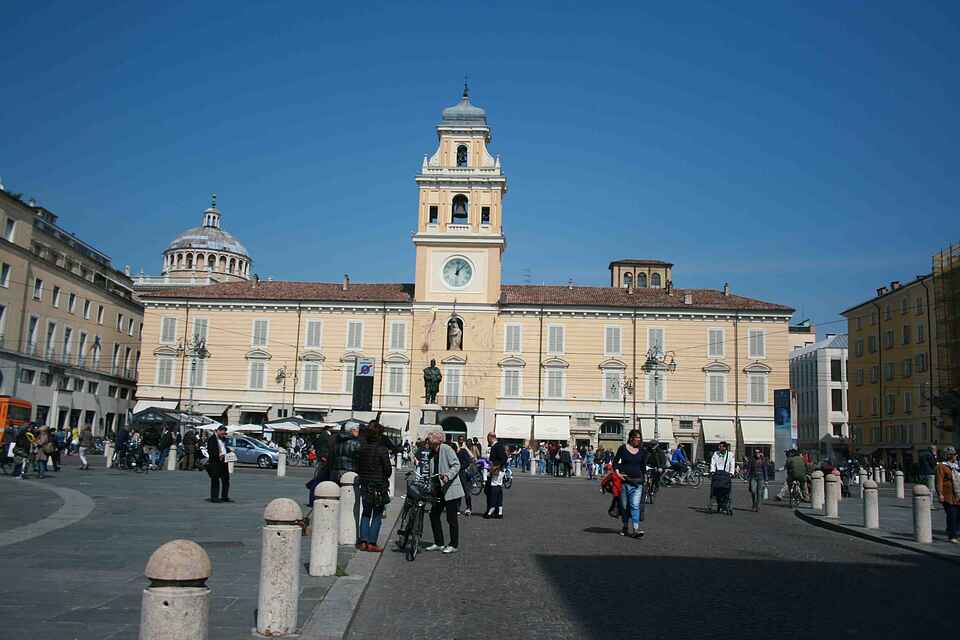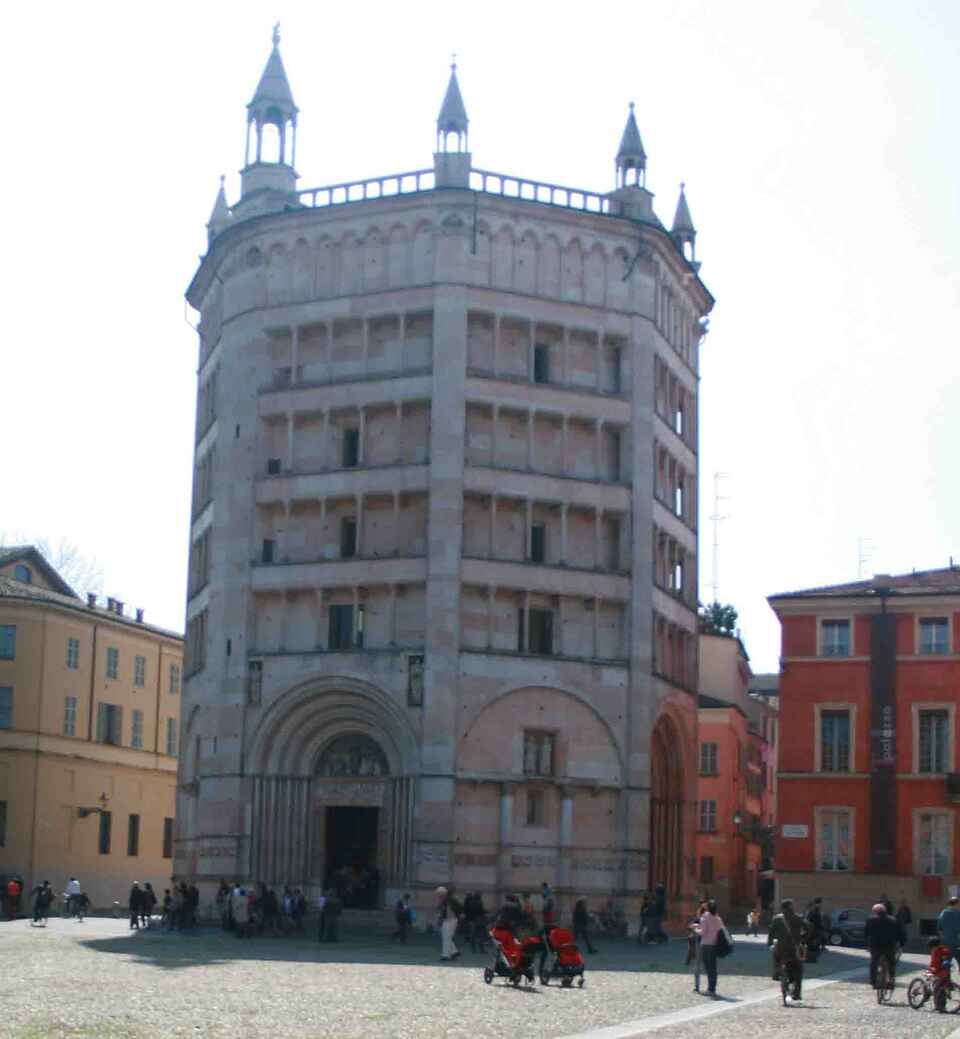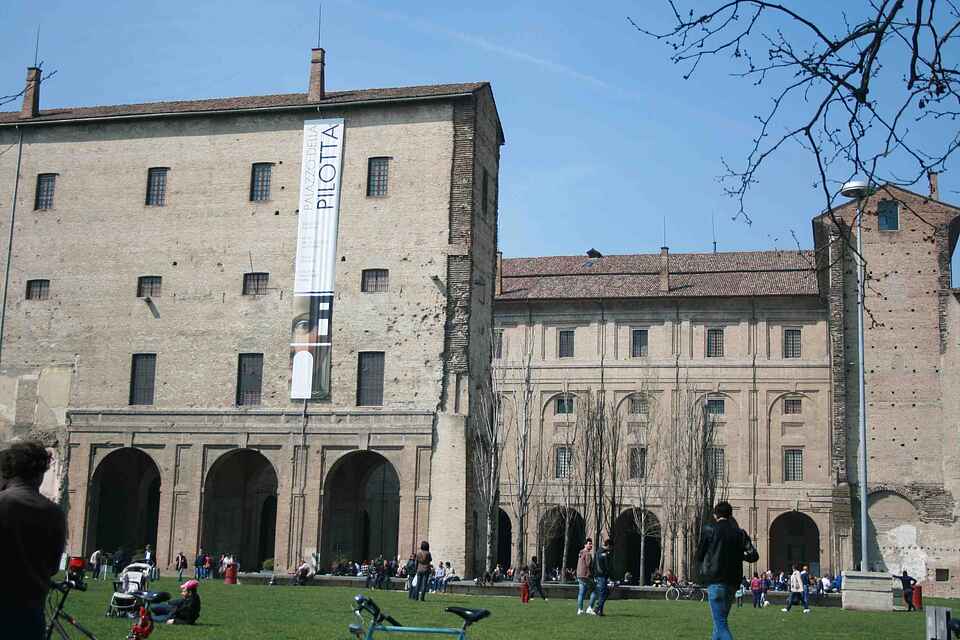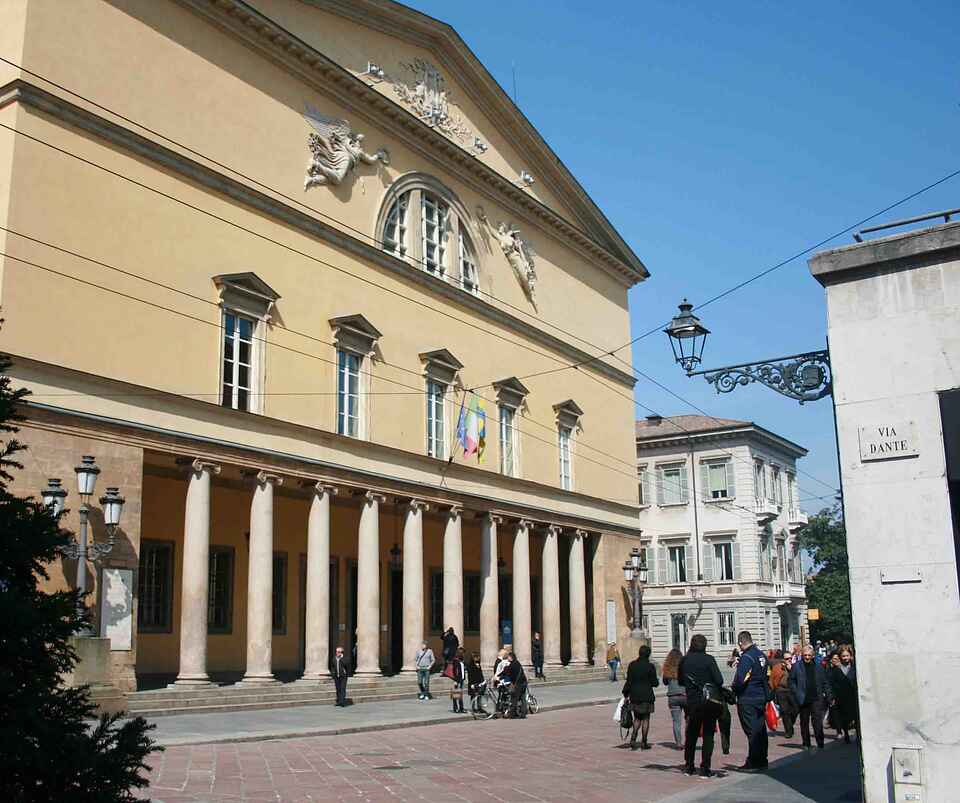Parma ham, Parmesan cheese, pasta Barilla. Some of the most famous Italian products come from Parma, one cozy little town halfway between Milan and Bologna. Giuseppe Verdi's hometown, also known for the famous opera house Teatro Reggio, is a must-go on a trip through the boot-shaped peninsula.


A genuine gastronomic history
The small alleys in Parma city center are steeped in history, atmosphere and especially a rich traditional food. The many delis, restaurants and cafes offering a range of culinary temptations but the traditional menu from the area must be tasted, which consists among other things of Prosciutto Crudo (Parma ham), Salame di Felino, Culatello, Parmigiano (parmesan cheese) Torta Fritta (fried and bread) and Tortelli (with pumpkin, potatoes or spinach and ricotta).

Parma's legendary food culture is reflected, of course, not only in the wide range of restaurants and traditional trattorias. Every year in the month of May, an event where professionals from all over the world can meet the real "Made in Italy". Since 2002, home to Parma, EFSA, the European Food Safety Authority, working for safe food for all EU citizens. In order to convey the rich tradition and expertise, visitors will find a selection of food and wine courses for both adults and children.
Medieval architecture and the atmospheric center
Parma, whose first foundations were laid during the Roman Empire, speaks not only to the sense of taste and gastronomy interests. A walk in the center of the atmospheric narrow streets or along the river (lungo Parma) provides immediate impression of the city's unique history and cultural heritage. The Cathedral which rises majestically in the center of town was built in the Middle Ages and is one of Italy's most important examples of Romanesque architecture.

Not far from the church are Piazzale della Pace with the magnificent Renaissance palace Palazzo della Pilotta built in 1500 of the wealthy and influential family Farnese. The palace houses a library of 1700 pieces over two museums, the Archaeological Museum and the National Gallery, known for works of, among others, Leonardo da Vinci, El Greco, Correggio and Parmigianino.

DI Giuseppe Verdi's footsteps

The elegant Teatro Reggio testify to the unique role of opera and classical music playing from Parma's history and cultural heritage and was world-renowned for Giuseppe Verdi. The influential composer was born in 1813 near Parma, where he grew up and wrote some of his many masterpieces. Today you can visit his childhood home in Roncole (a small town outside of Parma). Not far from here in the town of Busseto you can immerse yourselves in "il maestro's" artistic work in the Museo Nazionale Giuseppe Verdi dedicated to the composer's life and work. It is also possible to get shown round on a tour at Villa Sant'Agata, Verdi's estate and house as an adult. Take the train or car and enjoy a day trip in the rolling countryside to the sound of one of history's most famous composers.
Exclusive shopping and relaxing in the park

The Cathedral, Palazzo Pitti, Teatro Reggio and Giuseppe Verdi's fascinating historical monuments and world-famous works of art and when you're saturated in the cultural and artistic impressions, you can visit one of the many parks (Parco Ducale, Cittadella or Parco Ferrari). Manicured lawns, a profusion of flowers and beautiful fountains make Parma's many green spaces for true oases in the city uproar. They offer plenty of play areas for the family's youngest members. Let the kids loose and have a rest under the shade of a tree.

You can also relax and enjoy life by shopping in the many exclusive shops the city has to offer. Visit the many shops in Via Repubblica or in the small district in and around Via Farini, rich in small local clothing and designer shops.

